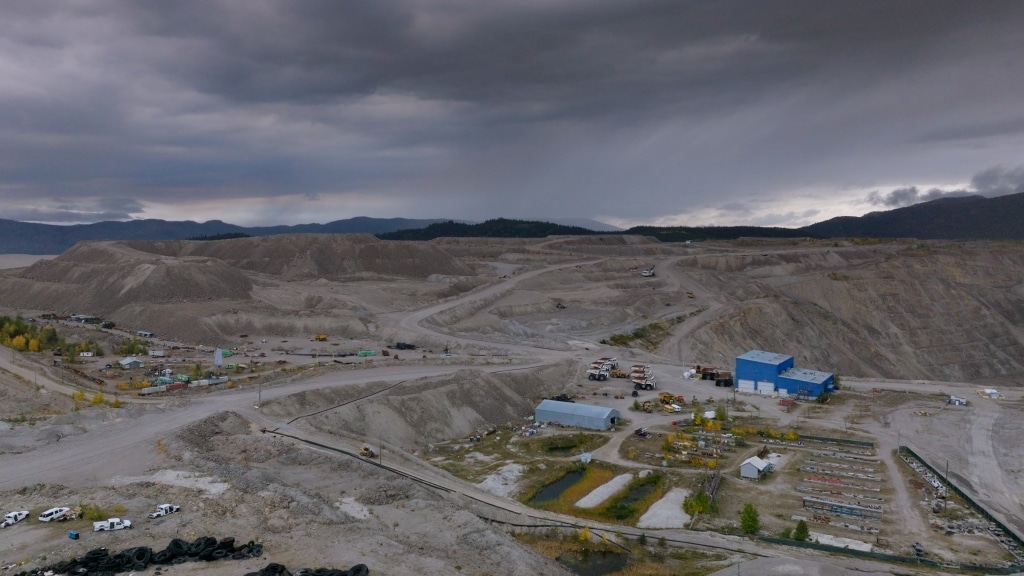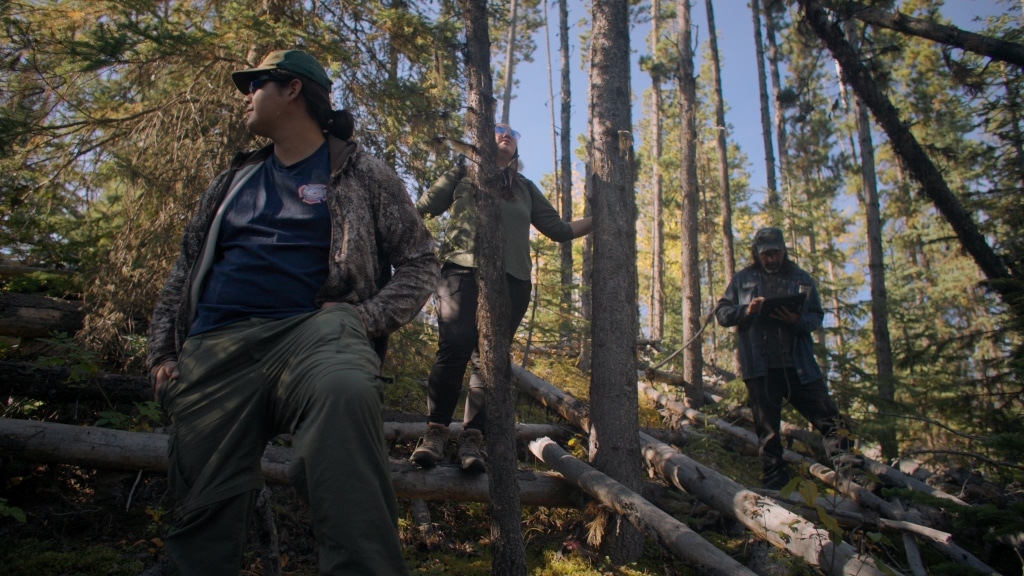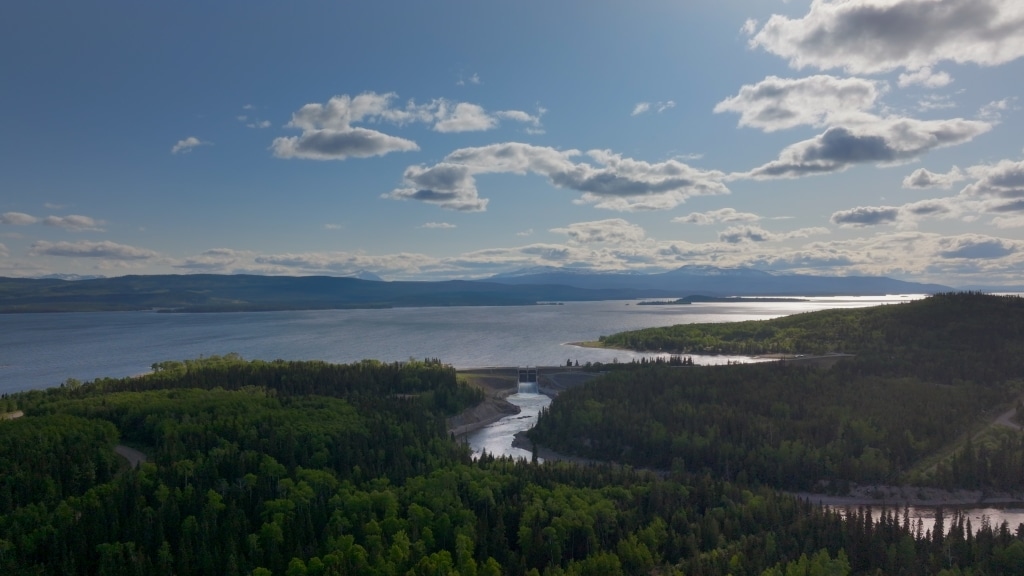By The Canadian Press
Published: May 09, 2025

The chief executive of Pembina Pipeline Corp. says he believes there will be enough demand to support an expansion to the Cedar LNG project on the B.C. coast as it looks to sign on more shippers for the first phase now in early construction.
Pembina has shortlisted the preferred counterparties, and has begun negotiating definitive agreements, Scott Burrows told analysts on a conference call Friday to discuss his company’s first-quarter results.
“They’re big, complicated agreements. We’ll do the right deal for Pembina, not the fastest deal for Pembina,” he said.
The US$4-billion floating liquefied natural gas export terminal in Kitimat, B.C., is a partnership between Pembina and the Haisla Nation. The first phase of the project was given the green light almost a year ago and is on track to come into service in late 2028. The cargoes of LNG — gas that has been chilled into a liquid state so it can be transported overseas on specialized tankers — will be bound for high-demand Asian markets.
ARC Resources Ltd. is to supply gas for about half of the plant’s capacity from the Montney shale in northeastern B.C. and northwestern Alberta.
Pembina has been looking to contract out its 1.5-millon-tonne-per-year share of capacity, and Burrows said talks are going well.
Based on conversations around bringing more producers into the first phase, Burrows said it appears a second phase would be welcome.
“Certainly the gas demand is there,” he said. “Based on early-stage negotiations on Cedar capacity, we believe there is demand for a Cedar 2.”
A question mark, however, would be whether there would be enough pipeline capacity to get the gas from inland to the coast, he added.
There are two other B.C. LNG projects in the works. Also in Kitimat, LNG Canada, a partnership between Shell and four Asian partners, is slated to start delivering shipments in the next few months. Meanwhile, Woodfibre LNG, owned by Pacific Energy Corp. and Enbridge Inc., is being built near Squamish, B.C., and is on track to be complete in 2027.
Also Friday, Pembina said it is not seeing a significant near-term financial impact related to Dow Inc.’s delay of a net-zero petrochemical project northeast of Edmonton.
Dow said last month it is still committed to the nearly $9-billion Path2Zero project in Fort Saskatchewan, Alta., but that it has decided to push back the timeline due to weak market conditions.
Pembina was to supply and transport ethane to the project.
“To date, Pembina has not spent material capital to support the ethane supply agreement and will continue to progress these projects, but may now have more time available to execute them,” Burrows said.
On Thursday, Pembina reported earnings of $502 million for the three months ended March 31, up from $438 million during the same period of 2024.
That amounted to 80 cents per diluted share versus 73 cents a year earlier.
Revenue was $2.28 billion, an increase from $1.54 billion.
The Calgary-based company says it doesn’t expect any impact from U.S. tariffs on energy imports this year given much of its business is under contract.
It says it has also not seen any significant decline in activity from producers in Western Canada who use Pembina’s system to get their oil and gas to market.
This report by The Canadian Press was first published May 9, 2025.
Companies in this story: (TSX: PPL)
Lauren Krugel, The Canadian Press
Kitimat is a district municipality in the North Coast region of British Columbia, Canada. It is a member municipality of the Regional District of Kitimat–Stikine regional government. The Kitimat Valley is part of the most populous urban district in northwest British Columbia, which includes Terrace to the north along the Skeena River Valley. The city was planned and built by the Aluminum Company of Canada (Alcan) during the 1950s. Its post office was approved on 6 June 1952.[4]
Kitimat's municipal area is 242.63 km2 (93.68 sq mi). It is located on tidewater in one of the few wide, flat valleys on the coast of British Columbia. The 2016 census recorded 8,131 citizens.[5]
The District of Kitimat Development Services situates the port of Kitimat as an integral part of the Northwest Corridor connecting North America to the Pacific Ocean and the Pacific Rim.[6]
History
[edit]"Kitimat" in the Tsimshian language refers to the Haisla First Nation as the "People of the Snow". Before 1950 the Kitimat township was a small fishing village at the head of the Kitimat Arm of the Douglas Channel, a deepwater fjord.[7]
The municipal town of Kitimat came into existence in 1951 after the Provincial Government of British Columbia invited Alcan to develop hydroelectric facilities to support one of the most power-intensive of all industries—the aluminum smelting industry.[8] The company built a dam, 16 km (10 mi) tunnel, powerhouse, 82 km (51 mi) transmission line, a deep-sea terminal and smelter. The company also designed, laid out and assisted with the initial construction of the city. At the time, the combined development was considered "the most expensive project ever attempted by private industry."[7]
Alcan employed the services of city planner Clarence Stein in order to ensure the community design facilitated an environment that would attract and retain workers, although Alcan intended it to not be a company town.[9] Today, Kitimat benefits from the quality of planning resulting from the Garden City design concept. Stein's design kept industry well separated from the community with large areas for expansion. He also created looped streets surrounding an urban city centre mall and linked by over 45 km (28 mi) of walkways connecting to all areas of the community.
The substantial greenspace areas and future expansion concepts designed by Stein have been upheld to this day by the city planners, thereby resulting in a low-density settlement pattern interspersed with forested patches. Also, the Alcan-based city origin and land provenance remain documented in the form of restrictive covenants registered on title.[10]
Economy
[edit]Aluminum producer Rio Tinto is the main employer in the municipality. Local government, schools, small manufacturing and service/retail are secondary contributors. Secondary core activities include engineering, import of petrochemical products (methanol and condensate), and metal fabrication. Approximately $5 billion in manufacturing investment is anticipated in the 2010–2015 period with a further $5 billion-plus in the investigative stage over the next decade.[citation needed] Anticipated investment includes an approximately $2 billion modernization to the Rio Tinto Alcan facilities and $3 billion in the Kitimat liquefied natural gas export development on Haisla Industrial Land at Bish Creek. The export facility would see natural gas piped in from the Western Canadian Sedimentary Basin (particularly from shale gas developments such as the Montney and Horn River) and shipped to Asian markets.[11] The LNG Canada project, a joint venture between Shell and affiliates of Petronas, Mitsubishi Corporation, Korea Gas Corporation and PetroChina would, if permitted, begin construction in 2015 of a gas pipeline from northeastern BC and a LNG export terminal with an expected lifespan of 30 years. The terminal, located on the Douglas Channel near the aluminum refinery, would be able to accommodate two LNG vessels at a time. Annual volume would be 24 million tonnes.[12] In July 2014 the Financial Post reported that Apache Corp. will "completely exit" the Kitimat LNG mega-project planned for B.C.'s West Coast. The U.S. hedge fund Jana Partners LLC has pressured Houston-based Apache to sell its 50% stake in the BC shale gas plays.[13]
Pending energy projects that have identified Kitimat as a strategic gateway include Pacific Northern Gas' Pacific Trail Pipeline (federal and provincial environmental assessments issued) and the Enbridge Northern Gateway Pipelines (currently being reviewed by the National Energy Board).
Additional investigations into clean energy developments include a Kitimat port development project featuring break-bulk port facilities and consideration of the best uses for the former Eurocan Wharf.[citation needed] In addition, the decommissioning of the former Eurocan pulp and paper facilities or a slimmed down operation are still under consideration. There is also renewed interest in mineral development potential in the Kitimat area. The neighbouring community of Terrace is also in advanced stages of approval for a number of clean energy projects along with the associated infrastructure for linking those projects to the provincial electrical grid.
Air services for the community are provided through Northwest Regional Airport, with connections to Prince George, Smithers, and Vancouver.
Kemano hydroelectric project
[edit]In the 1920s, the provincial government of British Columbia extensively evaluated the province's hydroelectric generating potential. In the late 1940s, the Canadian Government sought to tap the untapped resources of northwest British Columbia. All this led to the identification of the Eutsuk/Ootsa/Nechako River drainage basin as a potential site for a sizable reservoir. The potential of this vast system of rivers and lakes prompted British Columbia to invite Alcan to conduct a detailed investigation of the area. Alcan was searching for a site for a large aluminum smelter, an activity requiring vast amounts of electricity. Alcan concluded that the area was more than adequate to generate the required electricity, and decided to build a smelter there. The timing was right because the post-World War II boom saw a rising demand for aluminum.
Between 1951 and 1954, after signing the agreement with the British Columbia government for land and water rights, Alcan undertook the Kitimat–Kemano Project, one of the most ambitious Canadian engineering projects of the 20th century.[7] The project required not only building the Kenney Dam to reverse the Nechako River, but also boring a 16 km (10 mi) tunnel under Mt. Dubose, within the Coast Range, to the large hydroelectric Kemano Generating Station built under Mt. Dubose. Electricity from Kemano is transported 80 km (50 mi) across mountains via a custom built twin circuit transmission line. After avalanches tore away transmission towers, a catenary system was built.[14]
In three years, 6,000 construction workers built the dam, tunnel, powerhouse, transmission line, smelter, and town.[15]
The town of Kitimat was carved out of old-growth forest. The company invested over CA$500 million (equivalent to CA$3.3 billion) and employed over 35,000 workers over the five years required to build the Kenney Dam, the hydropower plant under Mt. Dubose at Kemano, a 250,000 tpy aluminum smelter, a year-round deepwater port, a townsite designed for a population of 50,000, and a paved highway to the outside world. As a result of this project other companies saw the potential of the area, resulting in further industrial development in the Kitimat valley.
LNG Canada terminal project
[edit]On 1 October 2018, Royal Dutch Shell and its Asia partners gave formal approval to an estimated $40 billion investment into the construction of a new liquified natural gas port terminal project named LNG Canada, coupled with the construction by a subsidiary of TransCanada of a gas pipeline, known as the Coastal GasLink Pipeline, linking this terminal to the Montney, British Columbia, natural gas field.[16][17]
When completed, LNG Canada will become the first Canadian LNG export ocean terminal, which will compete with other LNG terminals in the US, either existing or planned on the West (Alaska, Washington, Oregon), Gulf (Louisiana, Texas) and Atlantic coasts (Maryland, Virginia).
In October 2023, pipeline installation on the project was 100% complete.[18]
This new terminal being built in the port of Kitimat will be connected to the Pacific Ocean via the existing Douglas Channel. This development will add new sensitive ship traffic when the LNG Canada natural gas storage and liquefaction terminal will be completed and operational, which is estimated to be in 2025. The LNG Canada terminal project will see large LNG carrier ships loading liquefied natural gas at the future Kitimat LNG terminal, and sailing along the Douglas Channel to carry it to export destinations, mainly in Asia.
Pacific Future pipeline and refinery
[edit]The Pacific Future Energy Refinery was projected to refine more than 30,000 m3 per day of nearly solid bitumen of the Western Canadian Select variety for at least 60 years.[19] Grupo Salinas were the owners, and "European technology" was touted as the solution to environmental ills.[20] The construction of the plant was budgeted at $11 billion and included carbon capture and storage (CCS) technology.[21] Capacity would be increased in 200,000 bpd stages that would cost $6 billion. Simeco, a Milan engineering and construction firm would provide the design. Modules would be built in Asia and transported to Prince Rupert for assembly. The project headquarters was in Vancouver. When the project was announced in June 2014 the funds has yet to be assembled, and a preliminary venture round for design work was budgeted at $250 million.[20] Stockwell Day was hired by the proponents, as well as Shawn Atleo and Ovide Mercredi.[17] The Northern Gateway pipeline, originally proposed by Enbridge, would have supplied the resource.[21][17]
Opponents of the project included SkeenaWild Conservation Trust, and Haida people First Nations, as well as the Kitselas, Metlakatla and Gitga'at tribes of Tsimshian people.[17]
The CEO of Pacific Future, Samer Salameh, notified the Impact Assessment Agency of Canada (IAAC) in December 2024 of the project's failure,[21][22] and on 11 February 2025 Minister Steven Guilbeault wrote that the sponsors confirmed that they had discontinued the project, and that "This letter provides [Pacific Future] with notification that I have terminated the environmental assessment for the project."[21][19]
Geography
[edit]Kitimat is located 63 km (39 mi) south of Terrace and Thornhill on Highway 37. Prince Rupert is 207 km (129 mi) northwest, and Prince George is 629 km (391 mi) to the east.
Climate
[edit]Kitimat has a warm-summer humid continental (Köppen climate classification Dfb) with mild summers and cold, snowy winters (much warmer than inland) with significant snowfall averaging 128 inches (325 cm) each year. The rainiest season is fall, with the wettest month, October, having 320 mm of rainfall. There is also a significant drying trend (Mediterranean pattern) in summer, but it is too cold and rainy to classify as such. Cloud cover is significant, especially in winter, and less than 30% of possible sunshine occurs each year.
WIKIPEDIA







